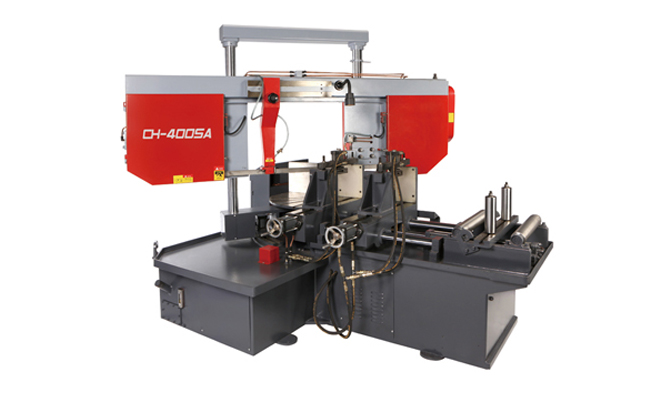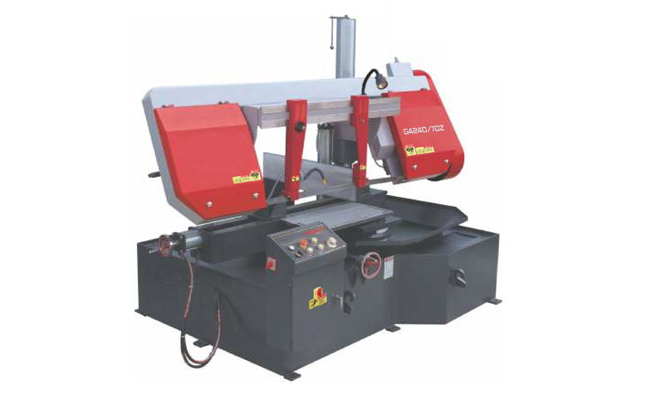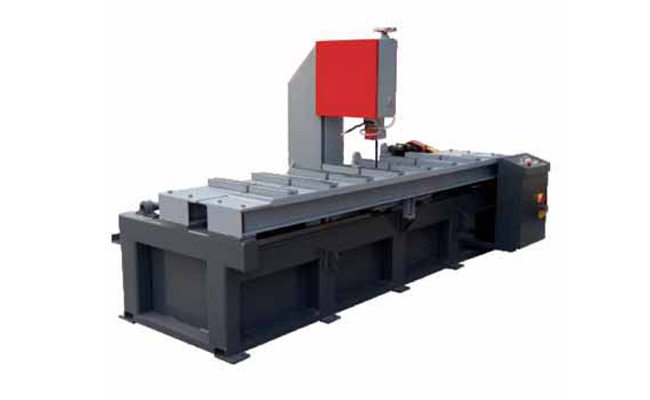CS-315 Circular Saw
Cutting Capacity :
Industrial metal bandsaws are essential for cutting various types of metal in manufacturing, fabrication, and construction. They come in different configurations based on their operation, cutting orientation, and application. Here are the main types:
1. By Operation Type
A. Manual Bandsaws
Operated by hand; the user controls the feed rate and cutting process.
Best for small workshops or low-volume cutting.
Example: Basic horizontal or vertical manual bandsaws.

B. Semi-Automatic Bandsaws
Combine manual loading with automated cutting cycles.
Often include hydraulic or pneumatic feed controls.
Example: Semi-automatic horizontal bandsaws with auto-feed.

C. Fully Automatic Bandsaws
Fully automated loading, cutting, and unloading.
Used in high-production environments.
Example: CNC bandsaws with robotic part handling.
2. By Cutting Orientation

A. Horizontal Bandsaws
Blade moves horizontally, ideal for long stock and bar cutting.
Often used for cutting metal bars, pipes, and structural materials.
Can be manual, semi-automatic, or fully automatic.
Subtypes:
Pivot (Swivel) Frame – The saw head pivots for angled cuts.
Dual Column – More rigid, used for heavy-duty cutting.

B. Vertical Bandsaws
Blade moves vertically, allowing for more intricate cuts.
Used for contour cutting, shaping, and detailed work.
Common in fabrication shops for custom metalwork.
Subtypes:
Fixed Head – Standard vertical bandsaw.
Tilting Head – Allows for bevel cuts.
C. Dual (Combination) Bandsaws
Can switch between horizontal and vertical operation.
Offers flexibility for different cutting needs.
3. By Application & Specialization
A. Cut-Off Bandsaws
Designed for straight cuts on metal stock.
Mostly horizontal models.
B. Contour Bandsaws
Used for curved or complex shapes.
Typically vertical bandsaws.
C. Structural / Beam Bandsaws
Heavy-duty saws for cutting large beams, pipes, and structural steel.
Often have high blade tension and powerful motors.
D. Portable Bandsaws
Handheld or benchtop models for on-site or small-scale cutting.
Example: Milwaukee Deep Cut or DeWalt portable bandsaws.
E. Cold Saws (Alternative to Bandsaws)
Use a circular blade with coolant for precise cuts.
Not technically a bandsaw but sometimes used for similar applications.
4. By Feed Mechanism
A. Gravity-Feed Bandsaws
Uses the weight of the saw head to apply cutting pressure.
Common in manual horizontal bandsaws.
B. Hydraulic-Feed Bandsaws
Hydraulic system controls the downfeed for consistent cutting.
Used in industrial semi-automatic and automatic saws.
C. Servo-Driven Bandsaws
Precision-controlled feed via servo motors (common in CNC bandsaws).
5. By Blade Speed & Cutting Method
A. Bi-Metal Bandsaws
Use high-speed steel (HSS) edge welded to a flexible alloy backing.
General-purpose metal cutting.
B. Carbide-Tipped Bandsaws
For cutting hard metals like titanium, Inconel, and tool steel.
Longer blade life but more expensive.
C. Friction Cutting Bandsaws
High-speed blades that melt through metal (used for fast cuts in thin materials).
Choosing the right industrial metal bandsaw depends on:
Material type (steel, aluminum, hardened alloys).
Cutting needs (straight cuts, contours, high production).
Workspace & automation level (manual vs. CNC).
Cutting Capacity :
Cutting Capacity :